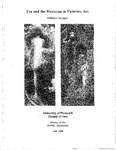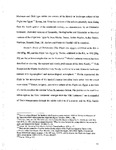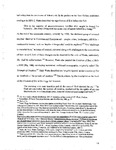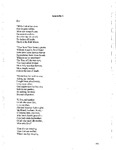Eve and the Madonna in Victorian Art
| dc.contributor.supervisor | Graham, Jennifer | |
| dc.contributor.author | Dungan, Bebhinn | |
| dc.contributor.other | School of Art, Design and Architecture | en_US |
| dc.date.accessioned | 2013-01-22T12:00:47Z | |
| dc.date.available | 2013-01-22T12:00:47Z | |
| dc.date.issued | 2012 | |
| dc.identifier | 317096 | en_US |
| dc.identifier.uri | http://hdl.handle.net/10026.1/1254 | |
| dc.description | Full version unavailable due to 3rd party copyright restrictions. | |
| dc.description | Full version unavailable due to 3rd party copyright restrictions. | |
| dc.description | Full version unavailable due to 3rd party copyright restrictions. | |
| dc.description | Full version unavailable due to 3rd party copyright restrictions. | |
| dc.description | Full version unavailable due to 3rd party copyright restrictions. | |
| dc.description.abstract |
Abstract This study identifies and addresses representations of Eve and the Madonna exhibited at seven well-known London venues during the Victorian era (1838-1901). The subjects of Eve and the Madonna are here selected for detailed analysis from the broader context of Victorian religious subject pictures, a category of Victorian art that remains arguably under-researched. Nineteenth-century religious art was rooted in a Romantic sensibility and was invested with the purpose of providing a balm during a course, commercial industrial age, which, like the Enlightenment that preceded it, heralded the birth of modern life. Religious art of the nineteenth-century was promoted for consumption by the emerging middle class as a balm to the material age. However, the art that reflected this anti-modern, anti-capitalist impulse served, paradoxically, as both an antidote to and a participant in the materialist marketplace. During the mid-nineteenth century, a moralizing, instructional value was invested in art and religious subjects in general, which experienced a peak in exhibition c. 1850. By the 1860s, however, British art was characterized by a less narrative and didactic sensibility, reflected in Aestheticism, which was concerned with ‘a separation of art from the concerns of ‘real life,’ as well as the Venetian Renaissance. In the 188s, Symbolism emerged, characterized not by style, but a sensibility, which included preoccupation with emotions, dream states, mythologies and religion, innocence, sin, beauty, motherhood, sex, disease, death. Although they were traditional figures, the Madonna and Eve were each invested with, and emblematic of, some of these fin-de-siècle themes. The seven prominent Victorian London exhibition venues examined range from conservative promoters of academicism to sites that promoted the risk-takers of the nineteenth century, such as the Grosvenor Gallery and the New Gallery. These were venues where national tastes were codified, national heroes were made and international artistic values were reexamined and reevaluated. This dissertation examines a nineteenth-century trajectory, from the early Victorian era through the turn of the nineteenth to the twentieth century, identifying styles if art through which to biblical icons of feminine identity, Eve and the Madonna, were expressed, and examining the ideas invested in them, all within the context of the Victorian revival of interest in Renaissance art and the stylistic trends in nineteenth-century art making. | en_US |
| dc.language.iso | en | en_US |
| dc.publisher | University of Plymouth | en_US |
| dc.subject | Madonna | en_US |
| dc.subject | Eve | |
| dc.subject | Victorian Art | |
| dc.subject | Christian | |
| dc.subject | Art | |
| dc.subject | Bible | |
| dc.subject | Pre-Raphaelite | |
| dc.title | Eve and the Madonna in Victorian Art | en_US |
| dc.type | Masters | en_US |
| plymouth.version | Edited version | en_US |
Files in this item
This item appears in the following Collection(s)
-
01 Research Theses Main Collection
Research Theses Main







